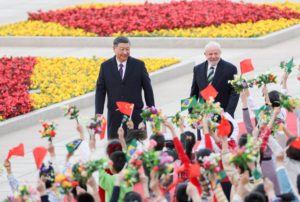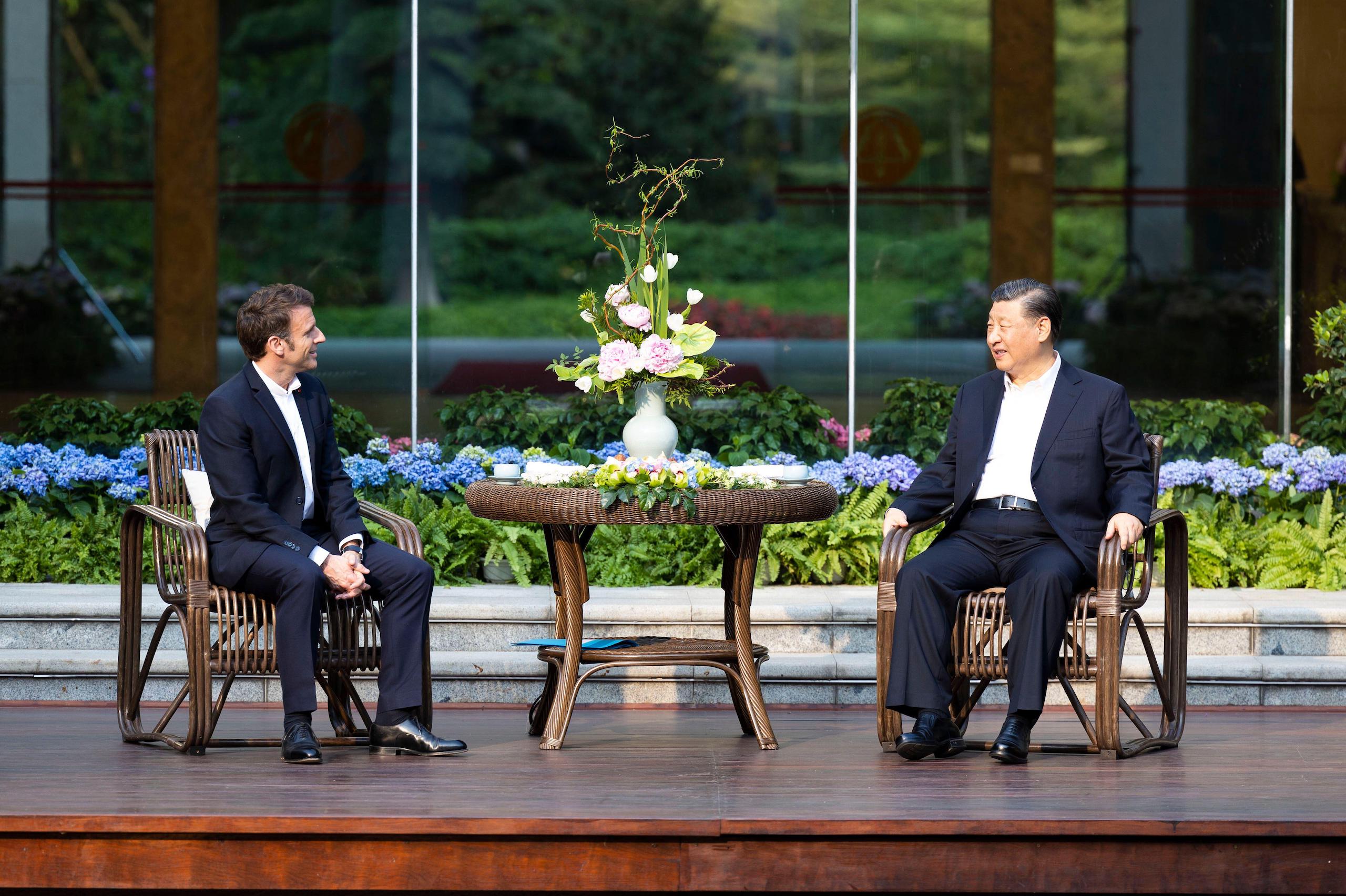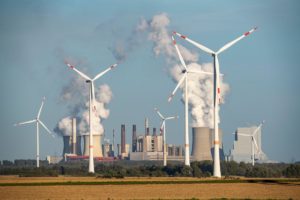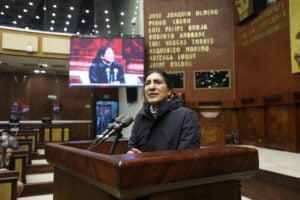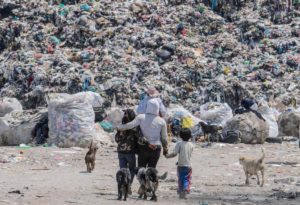Tensions arising from globalisation are increasing, leading to a trend towards deglobalisation and making the international action the climate crisis calls for even harder. The Covid-19 pandemic left countries isolated and estranged. The war in Ukraine has led to antagonism and power struggles. China–US relations are at their worst since diplomatic relations were established in 1979. The lack of cooperation between the world’s two biggest carbon emitters makes global climate governance a bigger challenge, as the needed trust and cooperation becomes harder to achieve.
The last month has seen a flurry of climate diplomacy from China. A joint statement with France contained much of substance on the climate; another with Brazil was specifically on climate; and more climate dialogue and cooperation were discussed in talks Chinese leaders held with both Dr Sultan Al Jaber, president-designate of this year’s COP28 climate talks, and Ursula von der Leyen, president of the European Commission.
This climate diplomacy should help promote a positive understanding of China in Europe and Latin America during these complex geopolitical times. It should also, through multilateral cooperation, inject new energy and impetus into global climate governance.
Since signing the Paris Agreement in 2015, China has attached much importance to bilateral climate cooperation. China and the US, despite tensions, have both treated the climate as a safer space in which to maintain cooperation, and although there have been setbacks, talks have not completely stopped. China has consistently taken climate issues seriously both at home and internationally, using bilateral and multilateral climate diplomacy to seek opportunities for cooperation and to contribute to international climate governance. The author believes China’s active involvement in such diplomacy will increase understanding of its climate policy and action. When the outside world recognises China’s actions and successes on climate change, there will be benefits for climate governance both at home and worldwide.
Major power cooperation
Climate change is a systemic issue requiring a systemic response. No country can stand alone.
Emissions data show that cooperation between the largest emitters is crucial for achieving the targets of the Paris Agreement. In 2021, the six biggest emitters (China, the US, the EU, India, Russia, India and Japan) together accounted for 68% of global emissions; China, the US and the EU were responsible for over 50%, while the two biggest economies, China and the US, accounted for over 40%. The response to climate change must be a joint undertaking, and cooperation is essential for driving global climate governance forward.
A look back shows that despite difficulties and reversals, when the big emitters set a good example, it can have a real impact. For example, in March 2020, the EU enshrined its carbon neutrality target in law, and many countries followed suit. China–US cooperation once drove global climate policy design and ultimately led to the Paris Agreement.
But climate governance is suffering from a trust deficit. Discussions of issues such as “how to decide who does what?” and “who acts first?” have been had over and over again. The trust deficit – both within and between global north and global south countries – is an obvious constraint on global climate governance.
There is no clearer example of this than finance for the Green Climate Fund. In 2010, the COP16 climate talks decided that, to help developing nations respond to climate change, developed nations should provide US$30 billion in rapid start-up funding by 2012, and a further $100 billion annually from 2013 to 2020. However, the definitions of what counts as climate funding, the associated statistics, and reporting and verification systems, remain unclear and often controversial.
According to OECD, in 2020 developed countries provided and leveraged $83.3 billion for climate action in developing countries, while the $100 billion per year goal could be met this year.
A lack of leadership is another major impediment to climate action. The EU often leads by example, both in climate governance and action. But various obstacles – its own growth issues, and inadequate internal cohesion and unity – mean it cannot achieve all it would like to. Meanwhile, the polarised politics of the US mean its actions on climate have gone from one extreme to the other, with Democrats forging ahead and Republicans hitting reverse. The Donald Trump administration promoted an America-first unilateralism, with various backwards moves on the climate wrecking the country’s standing and leadership, and hindering the sound development of global climate governance. Since he assumed office in 2021, President Joe Biden has brought in ambitious legislation and spending on climate action. However, nobody can guarantee that Trump won’t return.
Against this background of conflict and crisis, global warming is worsening and the window for action continues to shrink. Global climate governance is under unprecedented pressure.
China–US relations, a timeline
Since formal diplomacy began in 1979, the relationship between China and the US has seen ups and downs, but a crisis was always followed by a quick return to healthy relations. Here is a timeline of the key cooperative moments since 1997.
1997
President Jiang Zemin visits the US, and signs a bilateral deal to cooperate on energy and the environment.
1998
Bill Clinton pays a return visit to China, and signs a letter of intent to cooperate on monitoring urban air quality.
1999
The two countries sign another letter of intent, this time to cooperate on clean air and clean energy technology.
2003
A China–US Working Group on Climate Change is formed, to further technical cooperation.
2006
The China–US Strategic Economic Dialogue (SED) framework is created, which would see top leaders from both countries meet twice a year, in what one person on the US side referred to as “sort of like a G2”.
2008
A framework for energy and environment cooperation over the coming decade is signed during the fourth round of the SED.
2014
The two countries sign a Joint Statement on Climate Change.
2015
Xi Jinping and Barack Obama announce a Joint Presidential Statement on Climate Change, to work together to make a success of the upcoming Paris climate conference, which will lead to the Paris Agreement.
2021
At COP26, the two countries announce a Joint Glasgow Declaration on Enhancing Climate Action in the 2020s.
The years 2014 and 2015 were particularly crucial, as they underpinned the Paris Agreement which has guided global climate governance ever since. And since the Biden administration came to power, there have been frequent climate interactions between the countries.
In 2021, there was a phone call between the two leaders at Chinese New Year; strategic talks in Alaska that March; spring and autumn talks between the two nations’ climate envoys in Shanghai and Tianjin; a further presidential phone call in September; and in November, the Glasgow joint declaration on climate action. In good times and bad, climate has always been on the agenda and progress made, if bumpily.
But overall relations have gone into freefall since the Covid-19 pandemic took hold. Wang Jisi, a professor at Peking University’s School of International Studies and head of the university’s Institute of International and Strategic Studies, has said:
“China–US relations have been worsening since the latter part of the Trump administration, with disagreements intensifying on trade, technology, military affairs and ideology. Biden retained the bulk of Trump-era policies on China, but has focused more on the use of guardrails to manage the relationship. Currently we are more than halfway through Biden’s first term and relations continue to worsen thanks to the war in Ukraine, tensions over Taiwan and the US’s technological decoupling.”
Talks on methane emissions, clean power, the circular economy and urban climate action were planned for September 2022, but the visit by Nancy Pelosi, speaker of the US House of Representatives, to Taiwan in August, despite strong objections from the Chinese government, put an end to the work. There is one ray of hope: there have been reports that US climate envoy John Kerry is to visit China, which may restart climate diplomacy between the two countries.
Promoting multilateral climate diplomacy
Despite the pauses with the US, China has been making steady progress in other bilateral and multilateral climate efforts since signing the Paris Agreement.
According to the Ministry of Ecology and Environment’s records on international cooperation, China has been expanding the scope of its interactions, maintaining cooperation and exchanges with the EU, the Association of Southeast Asian Nations (ASEAN), African nations and the BRICS group of Brazil, Russia, China and South Africa. It has also participated in multilateral climate diplomacy with its neighbours, by attending meetings such as the Second Forum on Carbon Neutrality Goals of China, Japan and the Republic of Korea.
Interactions on climate have been seen frequently and with a number of countries in recent months. April’s China–France Joint Statement had 51 articles, eight of which were on climate issues. The statement made climate change part of the two countries’ joint response to the challenges of globalisation. This lays a good foundation for their future climate diplomacy and hopefully more concrete measures. For example, Article 36 reads:
“France and China intend to cooperate to resolve the difficulties in accessing financing in developing and emerging economies, and to encourage them to speed up their energy and climate transition while supporting sustainable development. China will take part in the Summit for a New Global Financing Pact in Paris in June 2023. France will attend the third ‘Belt and Road’ Forum for International Cooperation.”
April also saw the release of the Brazil–China Joint Statement on Combating Climate Change. Some of the articles are of particular interest. Article 5, for example, states:
“We are determined to further strengthen multilateralism, including with all our partners within the Group of 77 and China (G77+China), with a view to a model of climate solidarity that is collective, that rejects unilateralism and green trade barriers, and that is firmly grounded on values of solidarity and cooperation in our international community”.
Meanwhile, Article 7 reads: “We urge developed countries to honour their unfulfilled climate finance obligations, and to commit to their new collective quantified goal that goes well beyond the floor of USD 100 billion per year and provide a clear roadmap of doubling adaptation finance.”
China’s climate measures, at home and abroad
Accurately evaluating China’s climate diplomacy and its future direction is not just important to China – it is also important for the process of global climate governance.
China is still a developing nation, with uneven levels of socioeconomic development, a coal-heavy energy mix, and a comparatively weak foundation in science and technology. But between 2012 and 2021, it saw economic growth average 6.5%, while energy consumption increased by an average of only 3%. The enormous efforts China has made towards its low-carbon transition deserve to be seen and valued.
A review of its domestic action on climate change and its climate diplomacy overseas finds there has been criticism and questioning, particularly of institutional arrangements, allocation of staff and funding, and policy focus. But China has continued to take active, responsible and sustainable measures, both at home and abroad.
In 2022, its newly installed wind, solar and hydropower capacity far exceeded that of newly installed coal. Meanwhile, wind and solar power generation reached 1.19 trillion kilowatt hours, a year-on-year increase of 21%, and supplying 13.8% of total electricity consumption. China’s power generation mix has been undergoing tremendous changes: also in 2022, the proportion of coal power in total power generation dropped from 65–70% to 58.4%, and the proportion of non-fossil energy power generation rose to 36.2%.
The joint statements with France and Brazil have set the tone for future cooperation. Can the outside world take a fair and objective view of China’s efforts on climate change? Can it recognise China’s efforts and successes and seek opportunities for cooperation and complementarity? Can it make cooperation the theme of its relationships with China and continually deepen and expand that cooperation? The answers to these questions will be of profound importance. Only when each side sees and accepts the other will there be more space for cooperation in climate diplomacy with China, and a brighter and more hopeful future for global climate governance.
